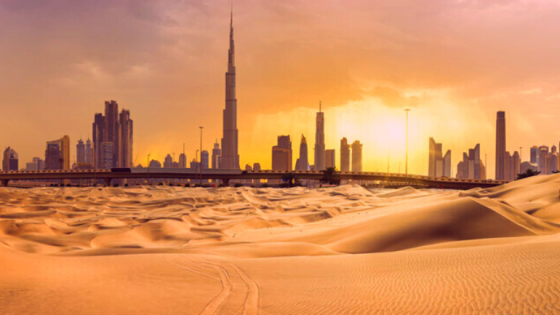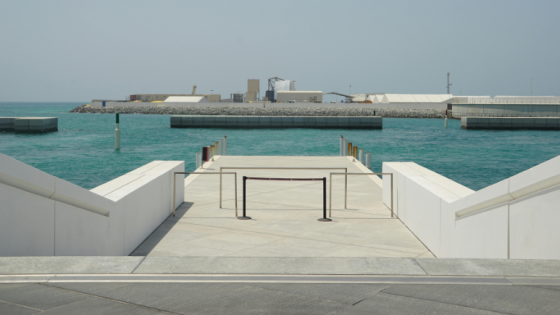Contents
UAE is known for its stunning landscapes .In this article, we’ll explore the wonderful climate of the UAE and environmental challenges.
The United Arab Emirates is a country known for its luxurious cities, stunning landscapes, and dynamic economy. However, beneath the veneer of luxury and modernity lies a climate that is nothing short of extreme. The unique geographical location of the United Arab Emirates, characterized by vast deserts, a long coastline and towering mountains, contributes to the diversity of UAE climate patterns.
Ecosystems and UAE climate
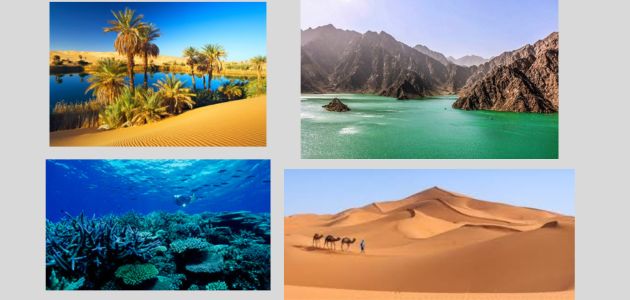
The UAE is characterized by its different geographical landscape nature, which affects climatic change. The natural environment of the UAE is characterized by diversity, and there are 4 main types of ecosystems:
- Desert ecosystem
- Mountain ecosystem
- Coastal and marine ecosystem
- Wetland ecosystem
UAE climate, mostly reflects a hot, humid desert climate in the summer and a pleasant mild climate in the winter, and temperatures in the mountainous areas are lower than the coastal areas. We will discuss it in detail.
“see also: UAE Islands and Archipelagos”
Desert wonderland
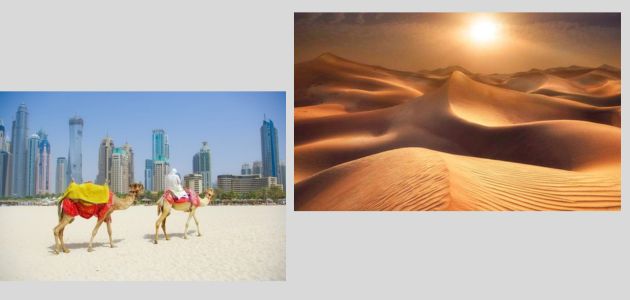
The United Arab Emirates is characterized by arid desert landscapes. The Rub’ al-Khali desert occupies vast areas of the country. This vast expanse of sand dunes stretches across the southern part of the country, making it one of the most iconic desert landscapes in the world. Summer in the desert regions of the UAE is extremely hot, with temperatures often exceeding 40°C (104°F). The combination of extreme heat and limited rainfall creates harsh conditions. This is the prevailing and distinctive UAE climate.
“read more: UAE Mangrove Forests“
Coastal areas and UAE climate
While the interior of the UAE can be extremely hot during the summer months, and the terrain varies between desert and oasis, the coastline provides a welcome respite. Coastal areas experience milder temperatures due to the moderating influence of Gulf waters. During the summer, temperatures rise and humidity is high. While in winter the weather is pleasantly mild, making the coastal area more bearable for residents and tourists. Coastal areas also receive greater amounts of rainfall than the Sahara, with occasional rainfall in the winter months.
” read also: UAE Carbon footprint“
Enjoyable winter in the UAE
One of UAE climate advantages is its mild winter, which attracts visitors from all over the world. During the winter months, from November to February, temperatures in the UAE are relatively cool, ranging from 14°C to 25°C (57°F to 77°F). This pleasant weather allows residents and tourists to enjoy outdoor activities, from beach picnics to desert camping, without the harsh summer heat.
“see also: Short History of Dubai“
unique weather phenomena
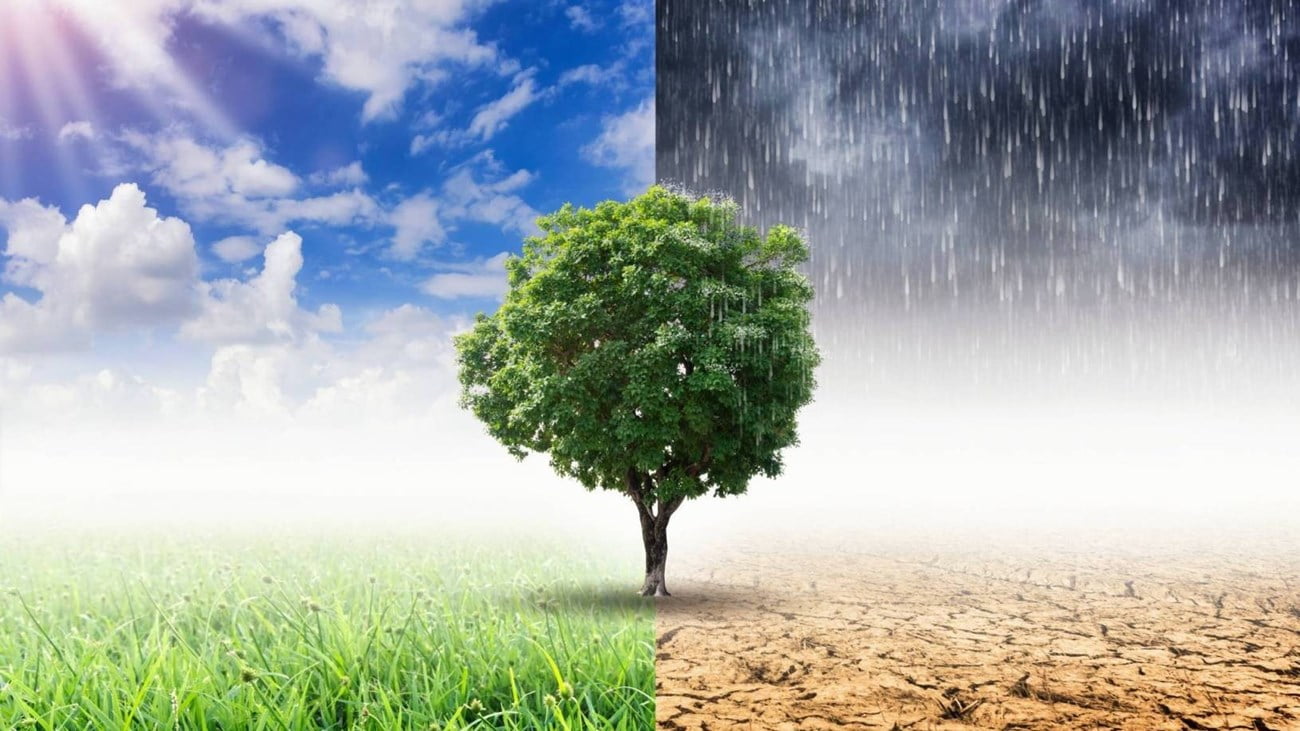
The following is an overview of main 2 of the distinctive weather phenomena which affect UAE climate:
Dust storms
mostly UAE climate characterize by hot and dust storm, referred to locally as “the North.” These storms are usually accompanied by strong winds blowing from the north or northwest, carrying with them fine particles of sand and dust. This affects the clarity of vision and the purity of the air, which poses challenges to transportation and outdoor activities.
The coastal areas of the UAE
coastal areas are vulnerable to some occasional tropical cyclones that originate from the Arabian Sea, resulting in heavy rains and strong winds. Although these hurricanes are rare, they can cause sea waves to rise and change in UAE climate, prompting the authorities to take precautionary measures to ensure the safety of residents and visitors.
“read more: Dubai Sports Events“
What efforts are being made to mitigate the harsh UAE climate?
The UAE has invested heavily in developing infrastructure, including advanced air conditioning systems, insulated buildings, and shaded walkways, to provide relief from the scorching heat. In addition, the extensive use of desalination plants. Solar energy has also been harnessed to serve development projects
Are there other factors affect UAE climate?
Yes, fossil fuels – such as coal, oil and gas – are the largest contributor to global climate change, accounting for more than 75 percent of global greenhouse gas emissions and about 90 percent of all carbon dioxide emissions. Due to their presence in the Earth’s atmosphere, these emissions trap the sun’s heat
What is the coldest area in the Emirates?
The Jebel Jais area in Ras Al Khaimah enjoys a climate that is 10 degrees Celsius lower than the rest of the landmarks in the country and is the highest mountain in the Emirates, with a height of 1,934 meters.
In conclusion, we mentioned in our article UAE climate that is characterized by extreme heat, drought, and occasional dust storms. In addition to the unique weather patterns, such as northern cyclones and occasional tropical cyclones, despite the challenges posed by this climate, the UAE has demonstrated a proactive approach in adapting to its effects and mitigating the harshness of the climate. As the country continues to develop, it strives to balance economic growth, environmental sustainability and the well-being of its residents.

